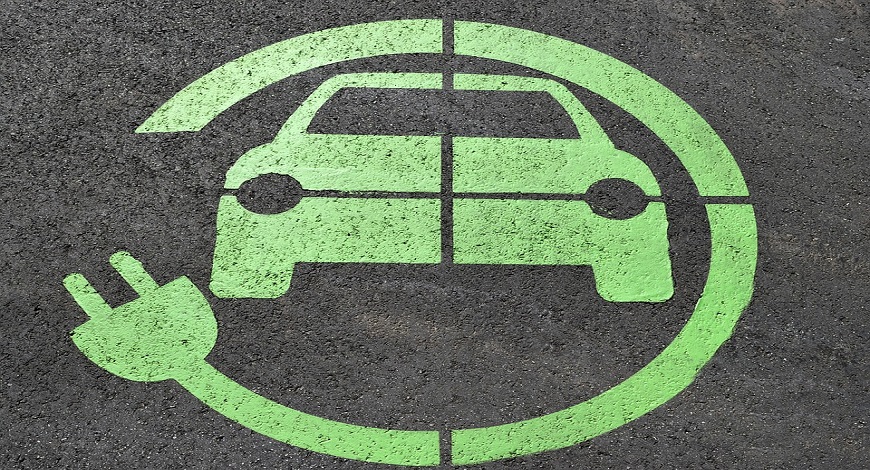
The world’s shared journey towards advanced energy storage technologies has been nothing short of extraordinary. In
the quest for a world that is energy-abundant, sustainable, and energy-secure, these innovations have not only revolutionized the electric vehicle (EV) industry but have also paved the way for more efficient and eco-friendly energy solutions across a diverse range of industries and ecosystems. The dynamic mix of Lithium battery chemistries serve different roles in different sectors, continually being optimized, innovated upon, and evolving into new roles. Many a Lithium battery from these chemistries will enter the battery reuse ecosystem and serve second lives.
In this edition of the LOHUM Green Gazette, we explore six of the most influential and popular Lithium battery technologies of the first quarter of the 21st Century.
 LFP batteries are widely renowned for their exceptional thermal stability, which significantly reduces the risk of thermal runaway and fires, making them a top choice for applications prioritizing safety. Furthermore, their extended cycle life and affordability make them a suitable option for longevity-driven uses, such as electric buses and grid storage. However, these lithium batteries exhibit lower energy density, which may lead to larger and heavier Lithium battery packs, and they have slightly lower charging efficiency, resulting in longer charging times.
LFP batteries are widely renowned for their exceptional thermal stability, which significantly reduces the risk of thermal runaway and fires, making them a top choice for applications prioritizing safety. Furthermore, their extended cycle life and affordability make them a suitable option for longevity-driven uses, such as electric buses and grid storage. However, these lithium batteries exhibit lower energy density, which may lead to larger and heavier Lithium battery packs, and they have slightly lower charging efficiency, resulting in longer charging times.
LFP batteries are more than just safety champions, they are the foundation of stable energy storage in applications where any compromise in safety is unacceptable, and any compromise in cost is a deterrent to proliferation. Their remarkable thermal stability makes them indispensable for electric buses, where safety is paramount for public transportation. Their long cycle life and cost-effectiveness also find them at the heart of grid storage, where longevity and affordability are key considerations.
NMC Lithium batteries offer a balanced performance profile, combining energy density, power output, and cycle life. This versatility makes them a cornerstone of the EV industry, where achieving a blend of these attributes is essential. NMC batteries provide a higher energy density compared to LFP, translating to longer driving ranges for electric vehicles. (Also Explore Types of Batteries in Electric Vehicles) However, they do require thermal management systems in high-demand applications, and like other lithium-ion chemistries, they can experience degradation over time.
The versatility of NMC batteries is what drives their widespread adoption. They are the backbone of the electric vehicle industry, offering a harmonious balance between energy density, power output, and cycle life. This equilibrium is precisely what modern EVs need to deliver longer ranges and maintain high-performance standards. NMC batteries don’t just power our cars; they enable a sustainable driving experience.
LCO batteries excel in energy density, offering one of the highest values among lithium-ion chemistries. This makes them a preferred choice for compact and high-capacity applications. Their long-standing presence in the consumer electronics industry underscores their well-established reputation. However, LCO cells tend to have limited cycle life and can be less thermally stable, necessitating robust safety mechanisms.
LCO Lithium batteries are the powerhouses of energy density. Their remarkable energy storage capability makes them the lifeblood of compact yet high-capacity applications. Think of your sleek and lightweight smartphones, laptops, and other portable electronic devices. LCO technology ensures that these devices can remain slim and lightweight without compromising on power.
LTO batteries are celebrated for their unparalleled cycle life and safety, lasting significantly longer than other lithium-ion chemistries. Their rapid charging capabilities further enhance their suitability for demanding and long-lasting applications, such as buses and grid storage. On the downside, LTO technology comes with lower energy density, resulting in larger and heavier Lithium battery packs for the same energy capacity, and limited suitability for compact high-energy storage applications.
LTO Lithium batteries have truly mastered the art of longevity. Their exceptional cycle life extends far beyond what traditional lithium-ion batteries can achieve. This durability makes them ideal for heavy-duty applications, such as electric buses and grid storage. Imagine a world where the batteries powering our public transport last for years, significantly reducing operational costs and environmental impact.
NCA technology stands out with its exceptional energy density, offering extended driving ranges for electric vehicles. They also exhibit a high power output capacity, supporting fast acceleration and high-speed driving. Efficient charging capabilities reduce charging times. However, NCA cells may have a moderate cycle life compared to some other lithium-ion chemistries, and they require robust safety mechanisms due to their moderate thermal stability.
Solid-state batteries represent the near-future pioneers of energy storage. This type of battery is also a Lithium battery. Their enhanced safety and thermal stability mitigate the risks of thermal runaway and fires, making them a promising choice for a variety of applications. These Lithium batteries achieve high energy density, providing longer driving ranges for EVs, and their lightweight design contributes to their appeal. However, it’s essential to note that solid-state battery technology is still in the developmental stage, and large-scale production is not yet widespread, which can result in higher production costs compared to traditional lithium-ion cells.
The enhanced safety and thermal stability of these Lithium batteries make them an attractive choice for various applications, especially electric vehicles. The promise of solid-state batteries is not limited to safety alone; their lightweight design and high energy density hold the potential to redefine the electric vehicle landscape. In the near future, solid-state batteries may become synonymous with cleaner and greener transportation, taking us closer to a sustainable tomorrow.
The choice of cell manufacturing technology depends on the specific requirements of the application. Each technology offers a unique set of advantages and disadvantages, and understanding these nuances is crucial for making informed decisions. As the battery industry continues to evolve, further advancements and innovations will bring us closer to a sustainable and clean energy future, that’s also affordable. It is also noteworthy that the limitations of current contemporary battery chemistries and technologies can be diminished through innovation and R&D advances in cell manufacturing techniques.
These technologies not only drive the energy transition but also play a vital role in advancing sustainable development. With a deeper understanding of these cell manufacturing technologies, we can make choices that accelerate the transition to a cleaner, greener world, paving the way for a more promising tomorrow.
Stay tuned to the LOHUM blog and our LinkedIn page for more content on sustainability, battery energy, the energy transition, circular economy, Lithium-ion battery recycling, and EV battery reuse.
Related blogs
This entrepreneur wants India to make its own lithium-ion cells for electric vehicle batteries

Forbes India
Rajat Verma already recovers raw materials from used cells at his venture, LOHUM Cleantech. He wants to close the loop by making cells in India as well.
India needs integrated recycling and repurposing battery business model: Rajat Verma of LOHUM Cleantech

YOURSTORY
In an interaction with AutoStory, Rajat Verma, Founder and CEO of LOHUM Cleantech, speaks about building his company, and about battery manufacturing and repurposing as an industry.
Sourcing Raw Materials Is A Big Challenge In Li-ion Battery Space: Founder Lohum

Business World Disrupt
Recognized as ‘The Most Innovative Company of the year 2022’ by The Confederation of Indian Industry (CII), LOHUM is a producer of sustainable Li-ion battery raw materials
1800 572 8822
Email : enquiry@lohum.com
G98, Site, 5, Kasna, Block A, Surajpur Site V, Greater Noida, Uttar Pradesh 201306
LOHUM Cleantech Private Limited, Plot No. D-7 & 8, Site 5th, Kasna Industrial Area, Greater Noida, Gautam Budh Nagar, Uttar Pradesh – 201308
LOHUM Cleantech Private Limited, Plot No. O-17, Site 5th, Kasna Industrial Area, Greater Noida, Gautam Budh Nagar, Uttar Pradesh – 201308